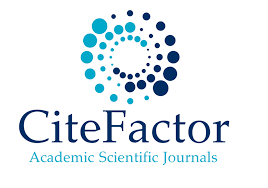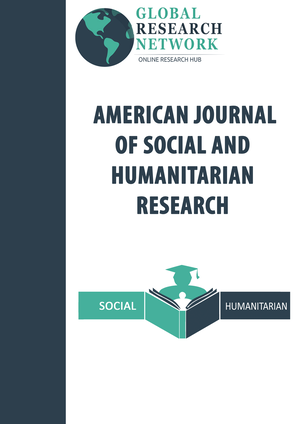Building The Tni's Defense Posture In Cyberspace: Strategies For Dealing With Cyber Warfare In The Digital Era
Abstract
Keywords
Full Text:
PDFReferences
. Anwarrudin, M., Sunarko, B. S., & Trihartono, A. (2023). The Republic of Lithuania's Response to the Shadow of Russia's Fifth-Generation War Threat.
. Arbidane, I., & Purii, H. (2024). IMPLEMENTATION OF INTEGRATED CYBER EDUCATION IN EUROPE. II, 156–166.
. Azzani, I. K., Adi Purwantoro, S., & Zakky Almubarok, H. (2024). Enhancing awareness of cyber crime: a crucial element in confronting the challenges of hybrid warfare in indonesia. Defense and Security Studies,.
. Baloch, R. (2019). Cyber Warfare Trends, Tactics and Strategies: Lessons for Pakistan. Journal of Development Policy, Research & Practice (JoDPRP), 3(1), 23–43. https://doi.org/10.59926/jodprp.vol03/02
. Bouke, M. A., & Abdullah, A. (2024). SMRD: A Novel Cyber Warfare Modeling Framework for Social Engineering, Malware, Ransomware, and Distributed Denial-of-Service Based on a System of Nonlinear Differential Equations. Journal of Applied Artificial Intelligence, 5(1), 54–68. https://doi.org/10.48185/jaai.v5i1.972
. Candra, A., Suhardi, S., & Persadha, P. D. (2021). Indonesia facing the threat of cyber warfare: a strategy analysis. Defense Journal: Information Media TTG Studies &
. Cha, J., Singh, S. K., Pan, Y., & Park, J. H. (2020). Blockchain-based cyber threat intelligence system architecture for sustainable computing. Sustainability (Switzerland), 12(16), 1–18. https://doi.org/10.32890/JICT2018.17.3.8260
. Dalimunthe, A. A., Suwito, S., & Asmoro, N. (2023). Strategy for Building an Ecosystem for the Maintenance of the Main Tools of the National Weapon System in the Face of Technological Developments. JIIP - Scientific Journal of Educational Sciences, 6(6), 4192–4195. https://doi.org/10.54371/jiip.v6i6.1777
. Diara, D. D. (2020). SOUTH KOREA'S CYBERSECURITY STRATEGY.
. Fedotenko, A. (2023). Cyber warfare as part of information warfare of Russia against Ukraine since the beginning of the 2022 Russian invasion. Věda a perspektivy. 8(27), 351–357.
. Firman, F. A. (2018). Estonia's cyber defense policy in responding to Russia's cyber sabotage to Estonia. Indonesian Computer University. https://elib.unikom.ac.id/files/disk1/799/jbptunikompp-gdl-fathikaanj-39937-4-unikom--i.pdf
. Gustina DM, V., & Ananda, A. (2024). Artificial Intelligence for Security Orchestration, Automation and Response: A Scope Review. Journal of Applied Computing, 10(1), 36–47. https://doi.org/10.35143/jkt.v10i1.6247
. Honeynet, BSSN, 2022. (2022). Honeynet Project BSSN Annual Report 2022 - IHP. 1–85. https://cloud.bssn.go.id/s/qSJenLAmr2ooF2Q
. Hugyik, A. (2020). Best practices in the application of the concept of resilience: building hybrid warfare and cybersecurity capabilities in the hungarian defense forces. Connections, 19(4), 25–38. https://doi.org/10.11610/Connections.19.4.02
. Jang, J., Kim, K., Yoon, S., Lee, S., Ahn, M., & Shin, D. (2023). Mission Impact Analysis by Measuring the Effect on Physical Combat Operations Associated With Cyber Asset Damage. IEEE Access, 11(April), 45113–45128. https://doi.org/10.1109/ACCESS.2023.3273612
. Kristian, I., Rochaeni, A., State, S. A., Studies, P., Government, I., General, U., & Yani, A. (2022). Military strategy regarding cyber for cyber superiority in electronic warfare. 6(2), 207–216.
. NATO Cooperative Cyber Defence Centre of Excellence (CCDCOE). (2023). Cybersecurity Practices for Military Organizations. https://ccdcoe.org/
. Nifakos, S., Chandramouli, K., Nikolaou, C. K., Papachristou, P., Koch, S., Panaousis, E., & Bonacina, S. (2021). Influence of Human Factors on Cyber Security within Healthcare Organisations : A Systematic Review. 1–25.
. Oh, S. J., Cho, S. K., & Seo, Y. (2024). Harnessing ICT-Enabled Warfare: A Comprehensive Review on South Korea's Military Meta Power. IEEE Access, 12(April), 46379–46400. https://doi.org/10.1109/ACCESS.2024.3378735
. Prieto, J. (2021). The integration of AI in US Cyber Command's cybersecurity strategy. Journal of Defense Technology, 15(3), 205–217.
. Purwoko, R., Febriyan, D. P., Adhe, G. P., Laksito, W. S. Y., Siswanti, S., & Hasbi, M. (2023). Honeypot-as-a-Service with Kubernetes Cluster. Jepin, 9(2), 204–2017.
. Rehardiningtyas, D. A., Firdaus, M. F., & Sulistyanto, S. (2022). Military Leadership Competencies in the Society 5.0 Era. Journal of Citizenship, 19(2), 126. https://doi.org/10.24114/jk.v19i2.35229
. Setiyono, A. (2023). THE DYNAMICS OF RUSSIA'S DEFENSE STRATEGY THROUGH HYBRID WARFARE IN THE CONFLICT WITH UKRAINE IN 2020 - 2023.
. Sholikah, D. I., Harbriyana Putra, T., & Fauzan Hidayat, M. (2024). Cyber Warfare Is The Newest Challenge To Support Indonesian National Resilience. Asian Journal of Social and Humanities, 2(9), 2000–2006. https://doi.org/10.59888/ajosh.v2i9.332
. Sulich, A., Rutkowska, M., Krawczyk-Jezierska, A., Jezierski, J., & Zema, T. (2021). Cybersecurity and sustainable development. Procedia Computer Science, 192(May), 20–28. https://doi.org/10.1016/j.procs.2021.08.003
. Yamin, M. M., Katt, B., & Gkioulos, V. (2020). Cyber ranges and security testbeds: Scenarios, functions, tools and architecture. https://doi.org/10.1016/j.cose.2019.101636
. Zhao, L., Zhu, D., Shafik, W., Matinkhah, S. M., Ahmad, Z., Sharif, L., & Craig, A. (2022). Artificial intelligence analysis in cyber domain: A review. International Journal of Distributed Sensor Networks, 18(4). https://doi.org/10.1177/15501329221084882
DOI: http://dx.doi.org/10.52155/ijpsat.v48.1.6828
Refbacks
- There are currently no refbacks.
Copyright (c) 2025 Fauzi Abdurrachman

This work is licensed under a Creative Commons Attribution 4.0 International License.



















